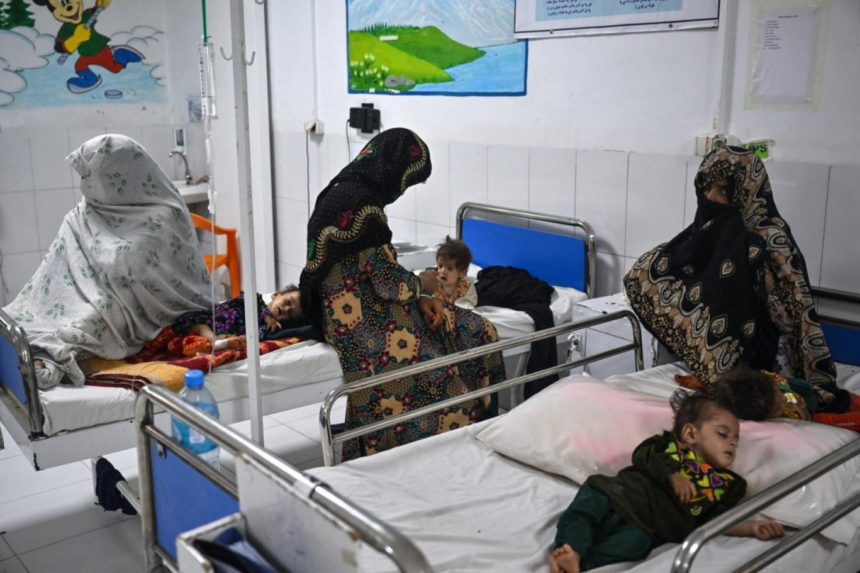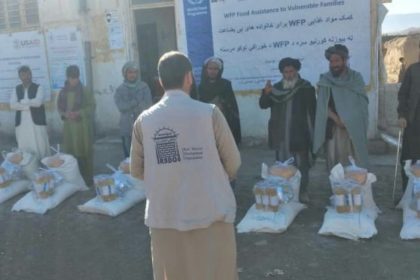RASC News Agency: The World Health Organization (WHO) has sounded a fresh alarm over Afghanistan’s deteriorating health conditions, revealing that a new wave of infectious diseases claimed the lives of at least 310 people in the month of May alone. The report, published on Sunday, June 21, underscores the Taliban regime’s catastrophic inability to manage even basic healthcare services in a country already buckling under humanitarian collapse. According to the WHO’s latest health assessment, the surge in mortality is primarily attributed to acute respiratory infections, measles, Crimean-Congo hemorrhagic fever (CCHF), and severe diarrheal diseases caused by dehydration. These are illnesses that would be easily preventable and treatable in countries with even moderately functioning healthcare systems. In Taliban-ruled Afghanistan, however, they continue to claim lives at an alarming rate.
Acute respiratory infections remain the leading killer. Nearly 93,000 new cases were reported across the country last month, with 195 fatalities. While these numbers mark a marginal decline from the previous month when 128,000 cases and 260 deaths were recorded they still reflect a harrowing failure: the Taliban’s inability to provide even minimal healthcare infrastructure in rural and conflict-affected areas. The spread of measles, a disease almost entirely preventable through vaccination, continues unabated. In May, 14,660 suspected cases and 93 child deaths were recorded down from April’s 18,000 cases and 111 deaths. However, the persistence of such outbreaks reflects the Taliban’s systematic neglect of public immunization campaigns, many of which have been either halted or sabotaged due to insecurity, lack of capacity, or ideological hostility toward international aid groups.
Alarmingly, the report notes an unprecedented increase in Crimean-Congo hemorrhagic fever a zoonotic disease transmitted from livestock to humans. In April, 109 cases were reported with six deaths. Just a month later, cases nearly doubled to 200, with 16 fatalities. With the Eid al-Adha holiday approaching a time of widespread animal slaughter and mass gatherings in rural communities health experts fear a further spike. Yet the Taliban administration has provided no coordinated veterinary oversight or public health guidance to prevent transmission. Meanwhile, severe diarrheal disease accompanied by dehydration typically treatable with basic oral rehydration therapy took the lives of six individuals in May, highlighting the regime’s failure to provide clean drinking water and sanitation to impoverished areas, particularly in southern and eastern provinces.
Additional WHO figures show 5,186 cases of malaria, 586 COVID-19 infections, and 216 dengue fever cases were registered in the same period. Though not immediately catastrophic, these illnesses could become regional epidemics without intervention, especially given Afghanistan’s dismantled disease surveillance systems under Taliban rule. International health officials warn that the worst may still lie ahead. Due to ongoing reductions in foreign assistance most notably from the United States and European donors an estimated 10 percent of Afghanistan’s population could lose access to basic healthcare services by the end of the year.
The withdrawal of aid is a direct result of the Taliban’s refusal to meet international human rights and governance standards. The regime’s policies particularly those restricting women’s participation in healthcare and blocking female humanitarian workers have crippled efforts to reach vulnerable populations, especially in remote and underserved areas. Public health experts warn that unless the Taliban reverse course and allow international organizations to operate independently, Afghanistan may plunge into one of the worst public health crises in recent history. The continued collapse of healthcare delivery, vaccine distribution, and sanitation infrastructure risks spawning secondary emergencies such as famine, mass displacement, and cross-border disease transmission.
Beyond the numbers lies a deeper failure: the Taliban’s theocratic and militarized approach to governance has proven wholly incompatible with the demands of modern public administration. Their obsession with censorship, ideological purity, and repression has left them incapable of building functioning systems of healthcare, education, or welfare. Three years into Taliban rule, Afghanistan is not merely suffering from a health crisis it is enduring a preventable disaster engineered by deliberate neglect and administrative incompetence. The Taliban’s continued stranglehold over the country is not just an impediment to recovery; it is an active contributor to the suffering of millions.






